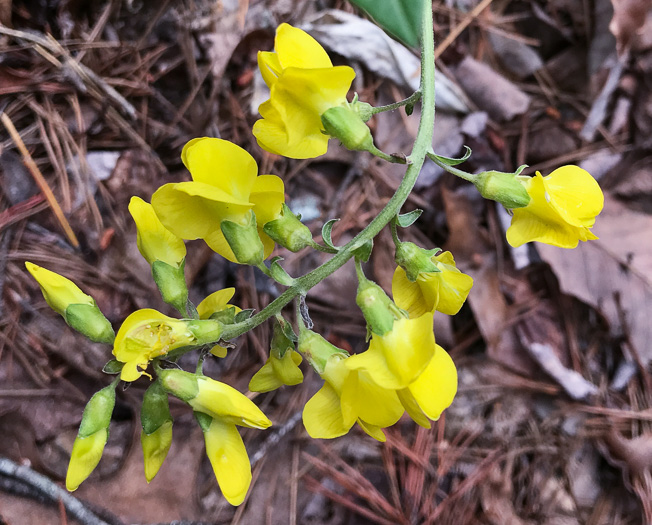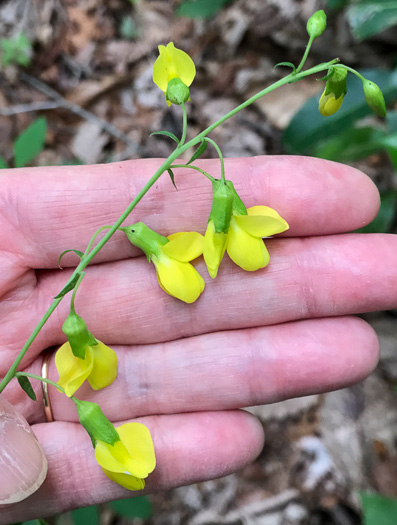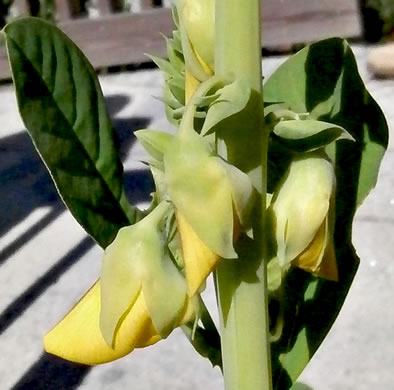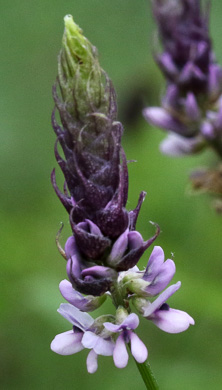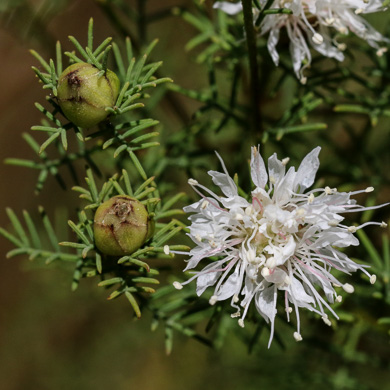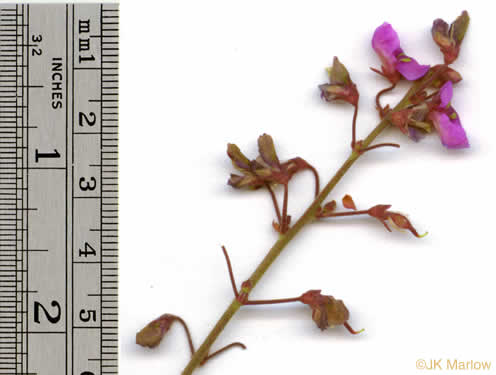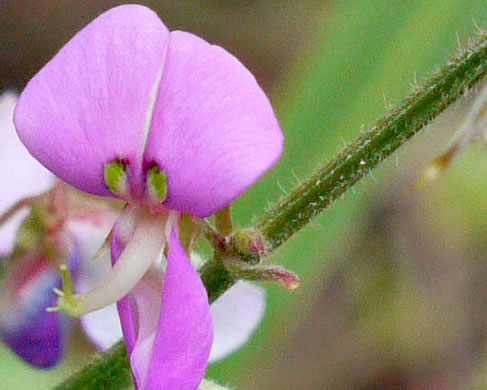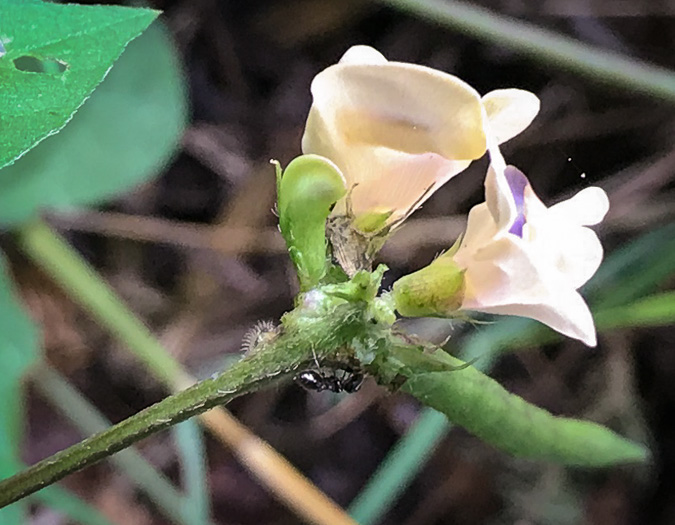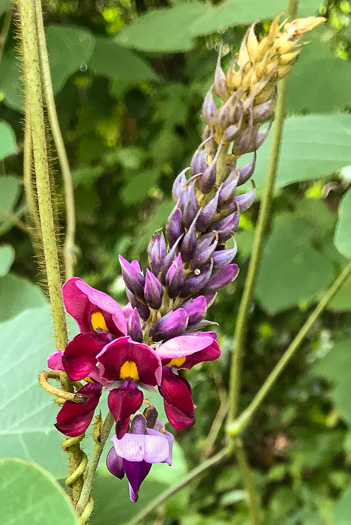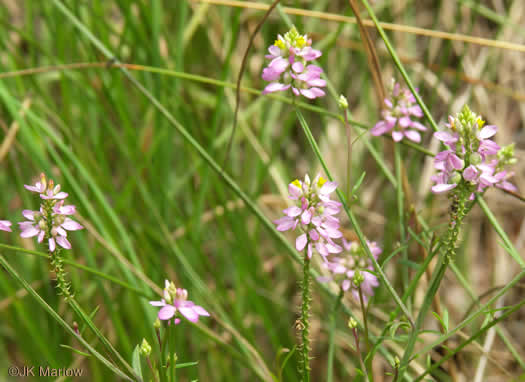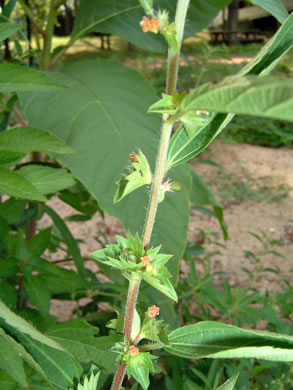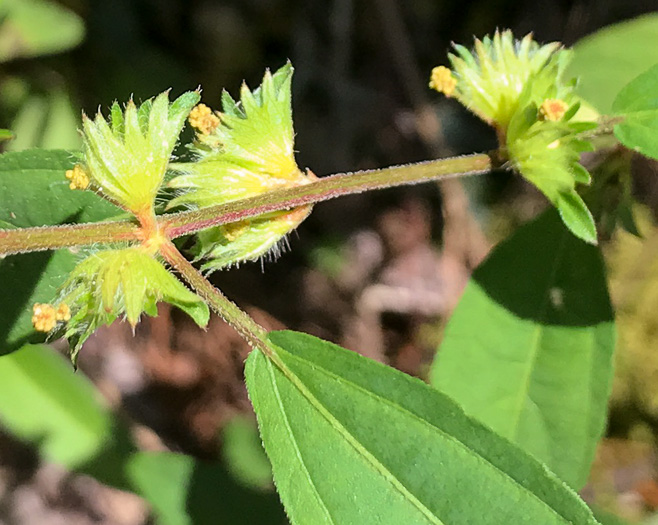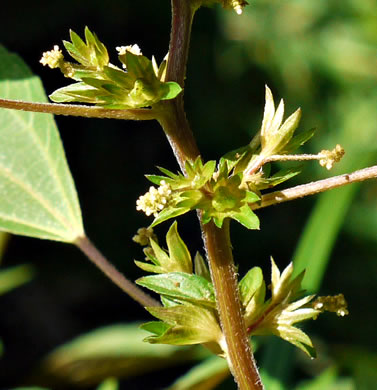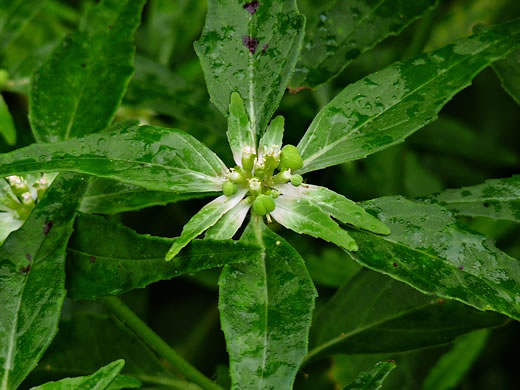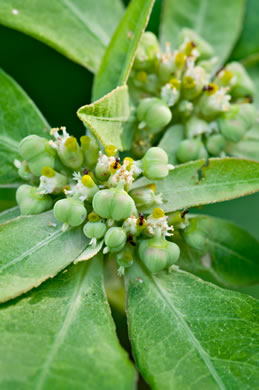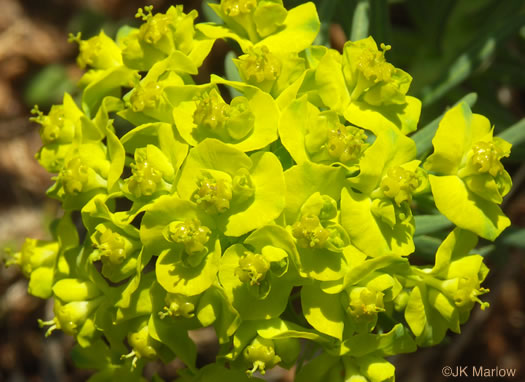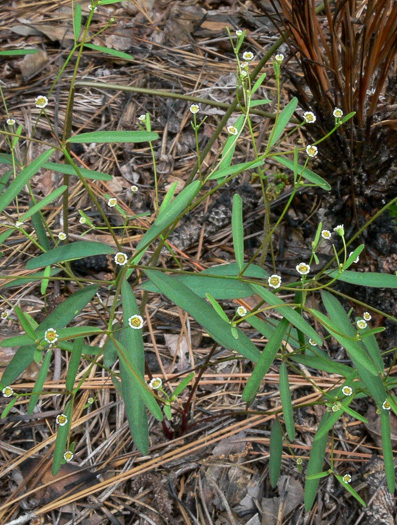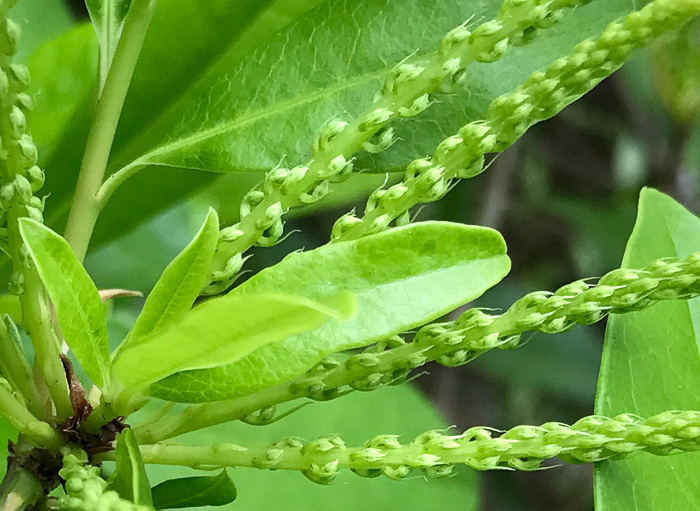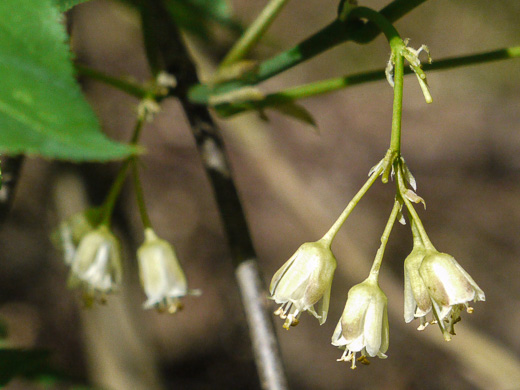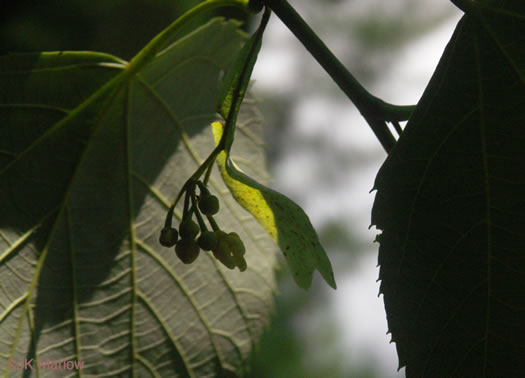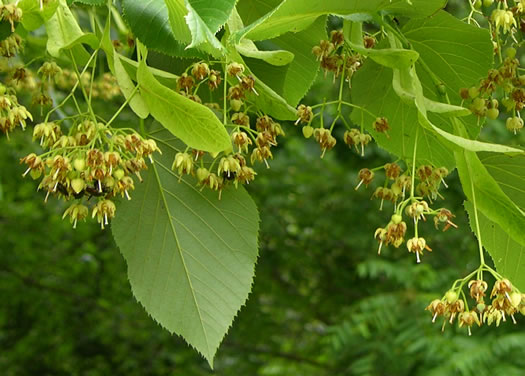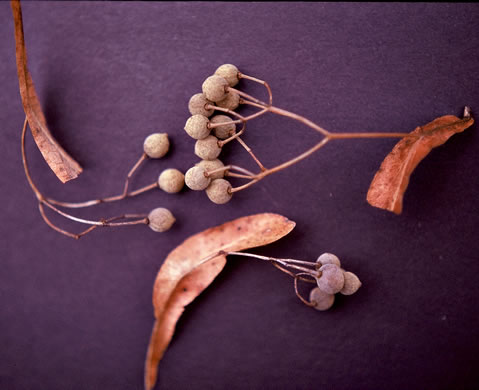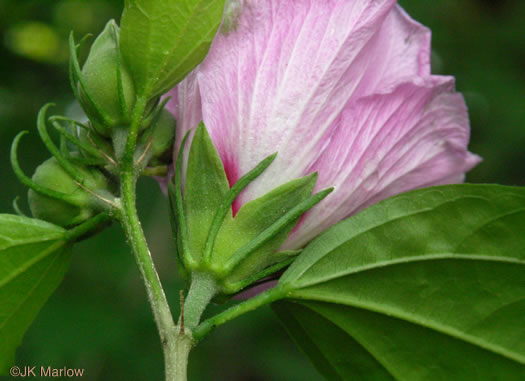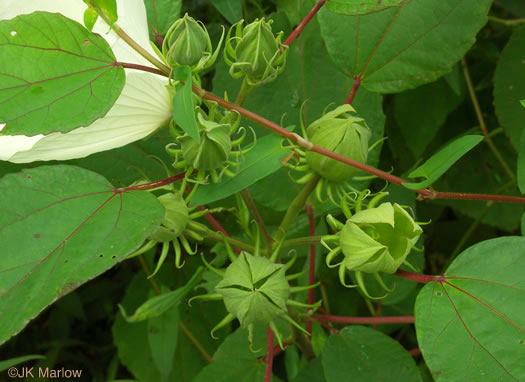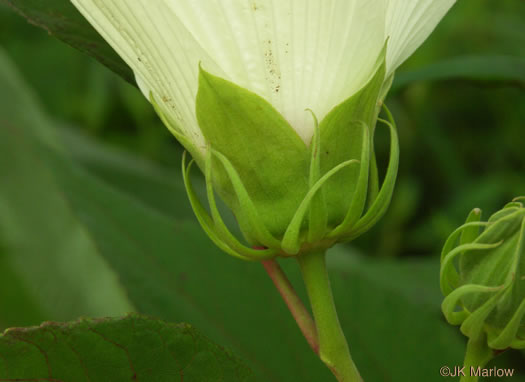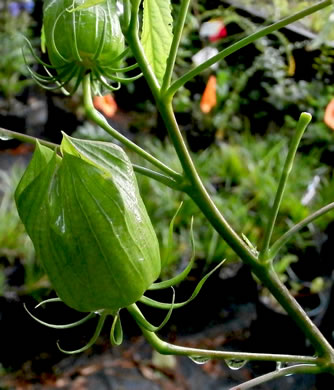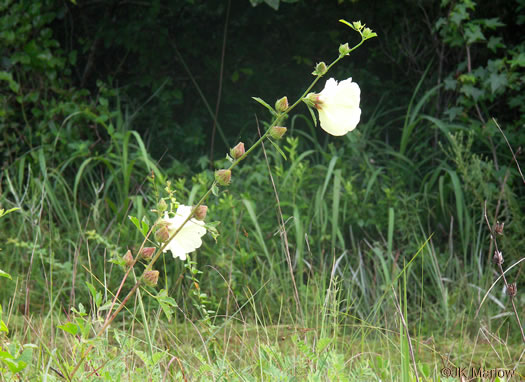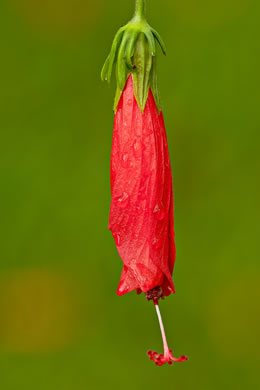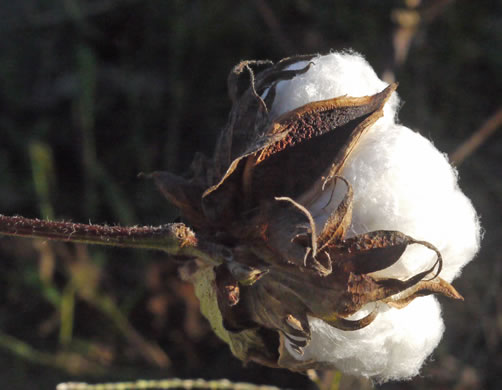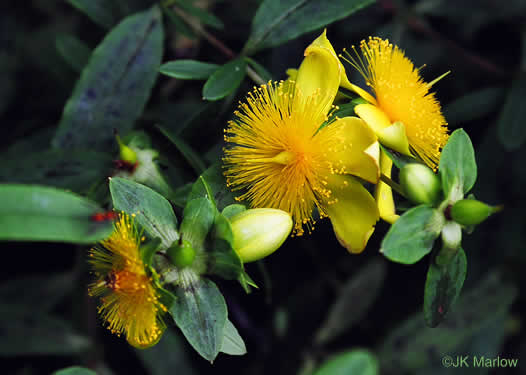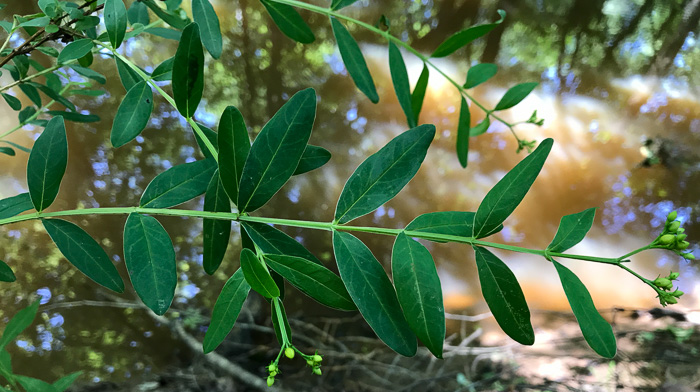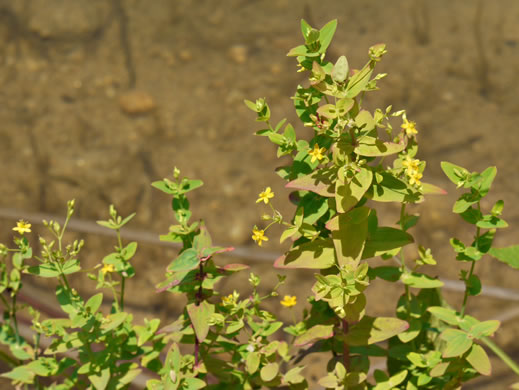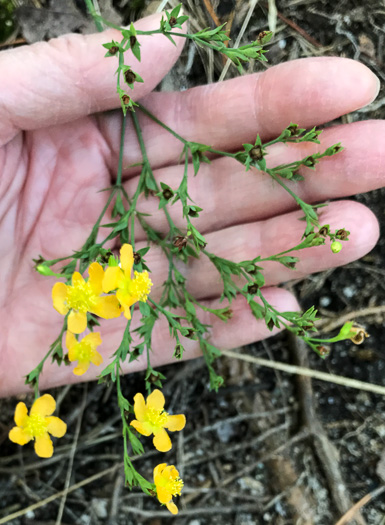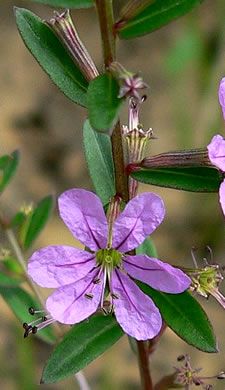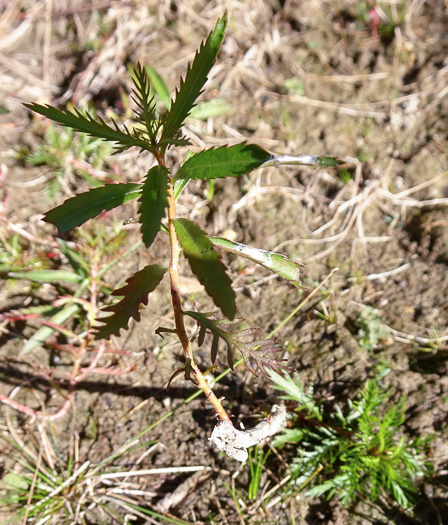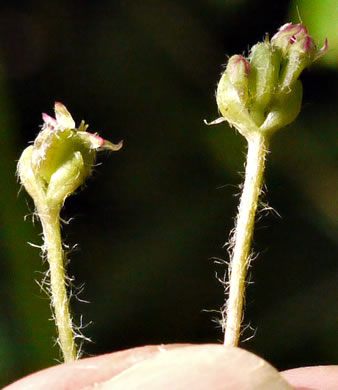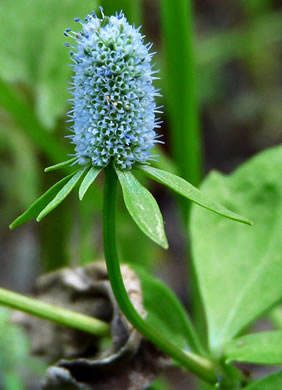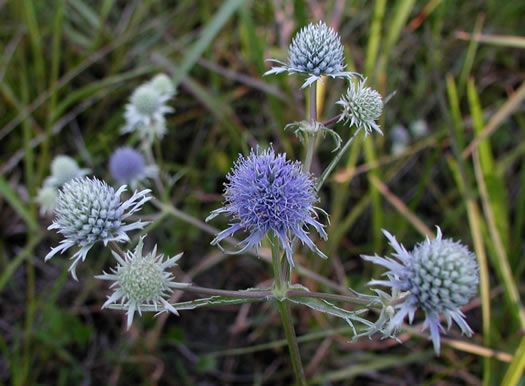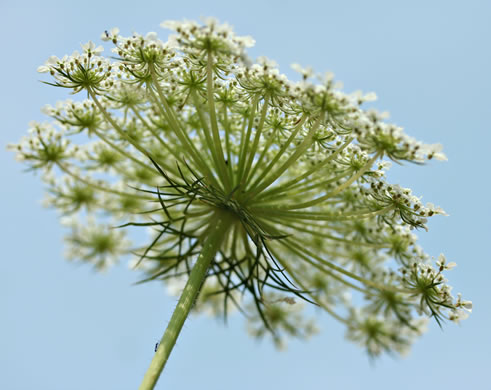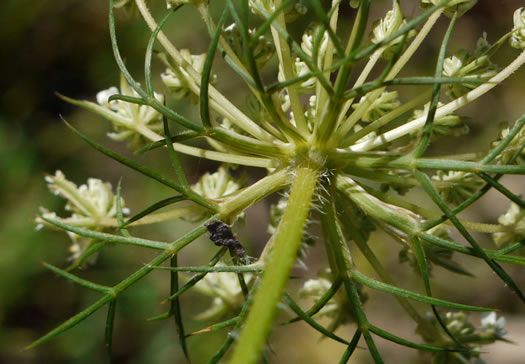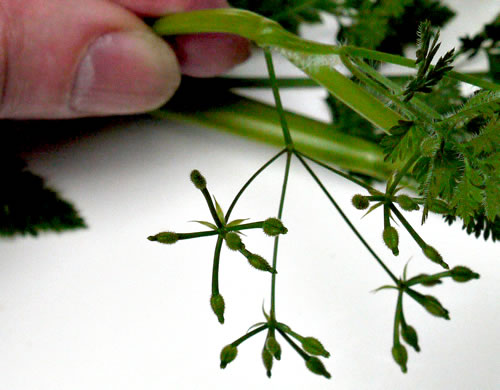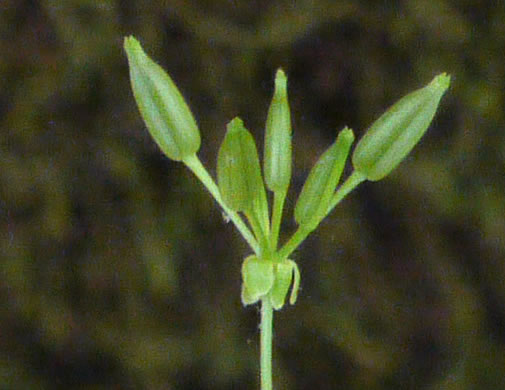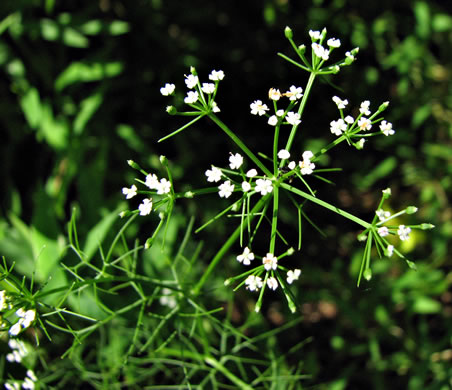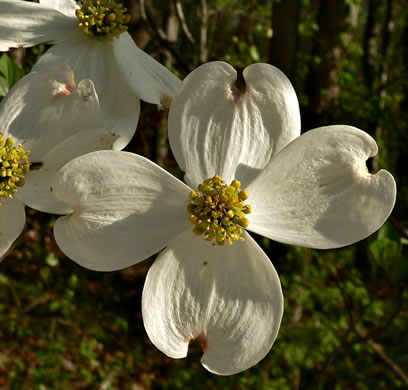Your search found 455 image(s) illustrating the term "bract." For a written explanation, click on "bract" in the Glossary.
PAGE 1 PAGE 2 PAGE 3 PAGE 4 PAGE 5 PAGE 6 PAGE 7 PAGE 8
To see larger pictures, click or hover over the thumbnails.
To go to the plant's detail page, click its name.
 Appalachian Golden-banner,
Thermopsis mollis
Appalachian Golden-banner,
Thermopsis mollis
Pedicels shorter than the bracts, per Weakley's Flora.
 Ashleaf Golden-banner,
Thermopsis fraxinifolia
Ashleaf Golden-banner,
Thermopsis fraxinifolia
Pedicels as long or longer than the bracts. Calyx glabrous, per Weakley's Flora.
 Showy Rattlebox,
Crotalaria spectabilis
Showy Rattlebox,
Crotalaria spectabilis
Pedicels subtended by a persistent 7-12mm bract & bearing two 1mm bractlets, per Vascular Flora of the Carolinas (Radford, Ahles, & Bell, 1968).
 Smooth Rattlebox,
Crotalaria pallida var. obovata
Smooth Rattlebox,
Crotalaria pallida var. obovata
Calyx densely pubescent, bracteoles at its base. Corolla ~ 2x long as calyx, per Flora of China.
 Eastern Sampson's-snakeroot,
Orbexilum psoralioides
Eastern Sampson's-snakeroot,
Orbexilum psoralioides
Flowers subtended by 6-10mm long bracts with abruptly caudate, 3-5mm long tips, per Vascular Flora of the Carolinas (Radford, Ahles, & Bell, 1968).
 Summer Farewell,
Dalea pinnata var. pinnata
Summer Farewell,
Dalea pinnata var. pinnata
Flower heads have a conspicuous cuplike involucre of overlapping bracts, per Wildflowers of the Sandhills Region (Sorrie, 2011).
 Viperina,
Zornia bracteata
Viperina,
Zornia bracteata
Each flower is enveloped by two closely appressed, striate, ciliate bracts, per Vascular Flora of the Carolinas (Radford, Ahles, & Bell, 1968).
 Hairy Small-leaf Tick-trefoil,
Desmodium ciliare
Hairy Small-leaf Tick-trefoil,
Desmodium ciliare
Pedicels (2-)4-9mm long, each subtended by a secondary bract or bractlet, per Vascular Flora of the Carolinas (Radford, Ahles, & Bell, 1968).
 Nuttall's Tick-trefoil,
Desmodium nuttallii
Nuttall's Tick-trefoil,
Desmodium nuttallii
Bracts (subtending clusters of 2-3 flowers) usually villous, per Weakley's Flora (2012).
 Annual Sand Bean,
Strophostyles helvola
Annual Sand Bean,
Strophostyles helvola
Bracteoles (immediately subtending calyx) equal or exceed the calyx tube, per Weakley's Flora.
 Kudzu,
Pueraria montana var. lobata
Kudzu,
Pueraria montana var. lobata
Flowers on bracted short hairy pedicels, opening from base of raceme to top, per Forest Plants of the Southeast and Their Wildlife Uses (Miller & Miller, 2005).
 Curtiss's Milkwort,
Senega curtissii
Curtiss's Milkwort,
Senega curtissii
Bracts persist after lower flowers fall, per Wildflowers of Tennessee (Carman, 2005).
 Virginia Threeseed Mercury,
Acalypha virginica
Virginia Threeseed Mercury,
Acalypha virginica
Pistillate bracts hirsute below (± stipitate-glandular), lobes 1/4-1/2 length, per Flora of North America.
 Slender Threeseed Mercury,
Acalypha gracilens
Slender Threeseed Mercury,
Acalypha gracilens
Lobes of the pistillate bracts deltate, 1/10–1/4 bract length, per Flora of North America.
 Common Threeseed Mercury,
Acalypha rhomboidea
Common Threeseed Mercury,
Acalypha rhomboidea
Pistillate bract lobes lanceolate to triangular, 1/3-2/3 bract length, per Flora of North America.
 Pineland Threeseed Mercury,
Acalypha ostryifolia
Pineland Threeseed Mercury,
Acalypha ostryifolia
Pistillate spikes 3-11cm long, bracts deeply cleft into 9-17 linear teeth, per Vascular Flora of the Carolinas (Radford, Ahles, & Bell, 1968).
 Painted Leaf,
Euphorbia dentata
Painted Leaf,
Euphorbia dentata
Bracteal leaves usually whitish, pinkish or reddish, toward the base, per Vascular Flora of the Carolinas (Radford, Ahles, & Bell, 1968).
 Fiddler's Spurge,
Euphorbia heterophylla
Fiddler's Spurge,
Euphorbia heterophylla
Cyathial gland w a circular opening; bracteal leaves purple-spotted or green, per Weakley's Flora (2015).
 Cypress Spurge,
Euphorbia cyparissias
Cypress Spurge,
Euphorbia cyparissias
Bracteal leaves usually yellow-green. Glands of cyathia crescent-shaped, per Vascular Flora of the Carolinas (Radford, Ahles, & Bell, 1968).
 Cypress Spurge,
Euphorbia cyparissias
Cypress Spurge,
Euphorbia cyparissias
Bracteal leaves triangular-ovate; principal stem leaves linear, 1-2mm wide, per Vascular Flora of the Carolinas (Radford, Ahles, & Bell, 1968).
 Caper Spurge,
Euphorbia lathyris
Caper Spurge,
Euphorbia lathyris
Bracteal leaves similar to stem leaves but shorter, per Wildflowers of the Southern Mountains (Smith, 1998).
 White Sandhills Spurge,
Euphorbia curtisii
White Sandhills Spurge,
Euphorbia curtisii
Lower leaves are reduced and bractlike; upper leaves linear to lanceolate, per Wildflowers of the Sandhills Region (Sorrie, 2011).
 Titi,
Cyrilla racemiflora
Titi,
Cyrilla racemiflora
Each flower subtended by a solitary subulate (awl-shaped) bract 2-3mm long, per Vascular Flora of the Carolinas (Radford, Ahles, & Bell, 1968).
 Bladdernut,
Staphylea trifolia
Bladdernut,
Staphylea trifolia
Flower stalks about 3/4" long and subtended by a white bract, per Native Trees of the Southeast, An Identification Guide (Kirkman, Brown, & Leopold, 2007).
 American Basswood,
Tilia americana var. americana
American Basswood,
Tilia americana var. americana
Flowers in clusters on a slender stalk with a pendent leaflike narrow bract, per Native Trees of the Southeast, An Identification Guide (Kirkman, Brown, & Leopold, 2007).
 Mountain Basswood,
Tilia americana var. heterophylla
Mountain Basswood,
Tilia americana var. heterophylla
Flowers in clusters hanging from a strap-shaped bract, per Trees of the Southeastern United States (Duncan & Duncan, 1988).
 Mountain Basswood,
Tilia americana var. heterophylla
Mountain Basswood,
Tilia americana var. heterophylla
Flowers in clusters on slender stalk with leaflike, narrow, 4-5" long bract, per Native Trees of the Southeast, An Identification Guide (Kirkman, Brown, & Leopold, 2007).
 Mountain Basswood,
Tilia americana var. heterophylla
Mountain Basswood,
Tilia americana var. heterophylla
Fruit a cluster of brown nutlets attached to a 2-3" leaflike bract, per Woody Plants of the Blue Ridge (Lance).
 Rose-of-Sharon,
Hibiscus syriacus
Rose-of-Sharon,
Hibiscus syriacus
5 triangular calyx lobes and 7-10 linear involucral bracts, per Vascular Flora of the Carolinas (Radford, Ahles, & Bell, 1968).
 Swamp Rosemallow,
Hibiscus moscheutos
Swamp Rosemallow,
Hibiscus moscheutos
A whorl of bracts below the calyx looks like a ring of spider legs, per All About South Carolina Wildflowers (Midgley, 1999).
 Swamp Rosemallow,
Hibiscus moscheutos
Swamp Rosemallow,
Hibiscus moscheutos
Calyx lobes triangular-lanceolate, densely canescent. Involucral bracts linear, per Vascular Flora of the Carolinas (Radford, Ahles, & Bell, 1968).
 Halberdleaf Rosemallow,
Hibiscus laevis
Halberdleaf Rosemallow,
Hibiscus laevis
Calyx lobes broadly triangular, surfaces glabrous. Bractlets linear-subulate, per Flora of North America.
 Savanna Hibiscus,
Hibiscus aculeatus
Savanna Hibiscus,
Hibiscus aculeatus
Flowers in leafy bracteate racemes, per Vascular Flora of the Carolinas (Radford, Ahles, & Bell, 1968).
 Wax Mallow,
Malvaviscus arboreus
Wax Mallow,
Malvaviscus arboreus
Involucellar bractlets linear-spatulate, per Flora of North America.
 Upland Cotton,
Gossypium hirsutum
Upland Cotton,
Gossypium hirsutum
An epicalyx of bracts immediately subtends the calyx, per Weakley's Flora (2015).
 Golden St. Johnswort,
Hypericum frondosum
Golden St. Johnswort,
Hypericum frondosum
1-3 showy flowers with broad green bracts at the ends of branches, per Wildflowers of Tennessee, the Ohio Valley, and the Southern Appalachians (Horn, Cathcart, Hemmerly, & Duhl, 2005).
 Early St. Johnswort,
Hypericum nudiflorum
Early St. Johnswort,
Hypericum nudiflorum
Minute bracteal leaves & small petals cause inflorescence to appear naked, per Wildflowers of Tennessee, the Ohio Valley, and the Southern Appalachians (Horn, Cathcart, Hemmerly, & Duhl, 2005).
 Common Dwarf St. Johnswort,
Hypericum mutilum var. mutilum
Common Dwarf St. Johnswort,
Hypericum mutilum var. mutilum
Inflorescence w many normally sized leaves & leaflike bracts, appearing leafy, per Weakley's Flora.
 Strict St. Johnswort,
Hypericum virgatum
Strict St. Johnswort,
Hypericum virgatum
Bracteal leaves along the inflorescence branches few or none (vs. H. radfordiorum: numerous), per Weakley's Flora (2023).
 Northern Winged Loosestrife,
Lythrum alatum
Northern Winged Loosestrife,
Lythrum alatum
1-2 flowers in the axils of small leafy bracts, crowded along the spike, per www.illinoiswildflowers.info.
 Marsh Mermaid-weed,
Proserpinaca palustris
Marsh Mermaid-weed,
Proserpinaca palustris
Bracteal (emersed) leaves serrate; submersed pectinate leaves with 8-14 pairs of divisions, per Weakley's Flora (2023).
 Southern Water-milfoil,
Myriophyllum heterophyllum
Southern Water-milfoil,
Myriophyllum heterophyllum
Flowers/fruits (subtended by bracts) in erect spikes emersed from water, per Weakley's Flora (2015).
 Centella,
Centella erecta
Centella,
Centella erecta
Involucre of 2 conspicuous bracts. Umbels simple, subcapitate, axillary, per Vascular Flora of the Carolinas (Radford, Ahles, & Bell, 1968).
 Spreading Eryngo,
Eryngium prostratum
Spreading Eryngo,
Eryngium prostratum
Bracts linear, usually 1x+ long as heads, often strongly reflexed at maturity, per Vascular Flora of the Carolinas (Radford, Ahles, & Bell, 1968).
 Spreading Eryngo,
Eryngium prostratum
Spreading Eryngo,
Eryngium prostratum
Bracts subtending the head extending conspicuously
beyond its base, per Weakley's Flora (2012).
 Northern Rattlesnake-master,
Eryngium yuccifolium var. yuccifolium
Northern Rattlesnake-master,
Eryngium yuccifolium var. yuccifolium
Bractlets ovate or broadly lanceolate, prominent, per Vascular Flora of the Carolinas (Radford, Ahles, & Bell, 1968).
 Northern Rattlesnake-master,
Eryngium yuccifolium var. yuccifolium
Northern Rattlesnake-master,
Eryngium yuccifolium var. yuccifolium
Bracts & bractlets lanceolate, sharp, not extending beyond flower heads, per Wildflowers of Tennessee, the Ohio Valley, and the Southern Appalachians (Horn, Cathcart, Hemmerly, & Duhl, 2005).
 Sea Holly,
Eryngium maritimum
Sea Holly,
Eryngium maritimum
Bracts 3-5 spined, coriaceous, 0.5-3cm long & broad, exceeding the heads, per Vascular Flora of the Carolinas (Radford, Ahles, & Bell, 1968).
 Marsh Eryngo,
Eryngium aquaticum
Marsh Eryngo,
Eryngium aquaticum
Middle cusp of the bractlets elongate, distinctly longer than the lateral cusps, per Weakley's Flora (2023).
 Ravenel's Eryngo,
Eryngium ravenellii
Ravenel's Eryngo,
Eryngium ravenellii
Heads globose, 9-15mm diam. The styles exceed bractlets subtending each flower, per Weakley's Flora.
 Ravenel's Eryngo,
Eryngium ravenellii
Ravenel's Eryngo,
Eryngium ravenellii
Middle cusp of the bractlets about equal in length to the lateral cusps, per Weakley's Flora.
 Queen Anne's Lace,
Daucus carota ssp. carota
Queen Anne's Lace,
Daucus carota ssp. carota
Involucral bracts scarious-margined [margin somewhat translucent, not green], per Weakley's Flora.
 Queen Anne's Lace,
Daucus carota ssp. carota
Queen Anne's Lace,
Daucus carota ssp. carota
Involucral bracts pinnately divided into linear to filiform segments, per Vascular Flora of the Carolinas (Radford, Ahles, & Bell, 1968).
 American Queen Anne's Lace,
Daucus pusillus
American Queen Anne's Lace,
Daucus pusillus
Involucral bracts not scarious-margined, involucre extending beyond the compound umbel in flower, per Weakley's Flora (2022).
 Bur Chervil,
Anthriscus caucalis
Bur Chervil,
Anthriscus caucalis
Involucre absent. Involucel bractlets 3-5, linear or lanceolate, ciliate, per Vascular Flora of the Carolinas (Radford, Ahles, & Bell, 1968).
 Southern Chervil,
Chaerophyllum tainturieri
Southern Chervil,
Chaerophyllum tainturieri
Involucel bractlets 3-5, ovate, ciliate, per Vascular Flora of the Carolinas (Radford, Ahles, & Bell, 1968).
 Southern Chervil,
Chaerophyllum tainturieri
Southern Chervil,
Chaerophyllum tainturieri
Fruit narrowly ovoid, elongate. Involucel bractlets strongly reflexed in fruit, per Vascular Flora of the Carolinas (Radford, Ahles, & Bell, 1968).
 Hound's-ear,
Bupleurum rotundifolium
Hound's-ear,
Bupleurum rotundifolium
Small yellow flowers with conspicuous ovate bractlets about 3/8" long, per Wildflowers of the Southern Mountains (Smith, 1998).
 Eastern Bishopweed,
Ptilimnium capillaceum
Eastern Bishopweed,
Ptilimnium capillaceum
Samll white flowers in a compound umbel, the umbel bracts usually 3-parted, per Wildflowers of Tennessee, the Ohio Valley, and the Southern Appalachians (Horn, Cathcart, Hemmerly, & Duhl, 2005).
 Flowering Dogwood,
Benthamidia florida
Flowering Dogwood,
Benthamidia florida
Most laymen erroneously think that the showy white bracts are petals, per Great Smoky Mountains Wildflowers (Campbell, Hutson, Sharp, & Hutson, 1962).

